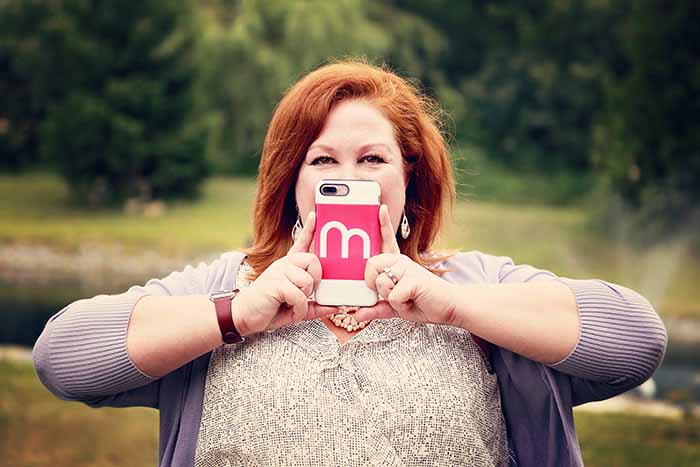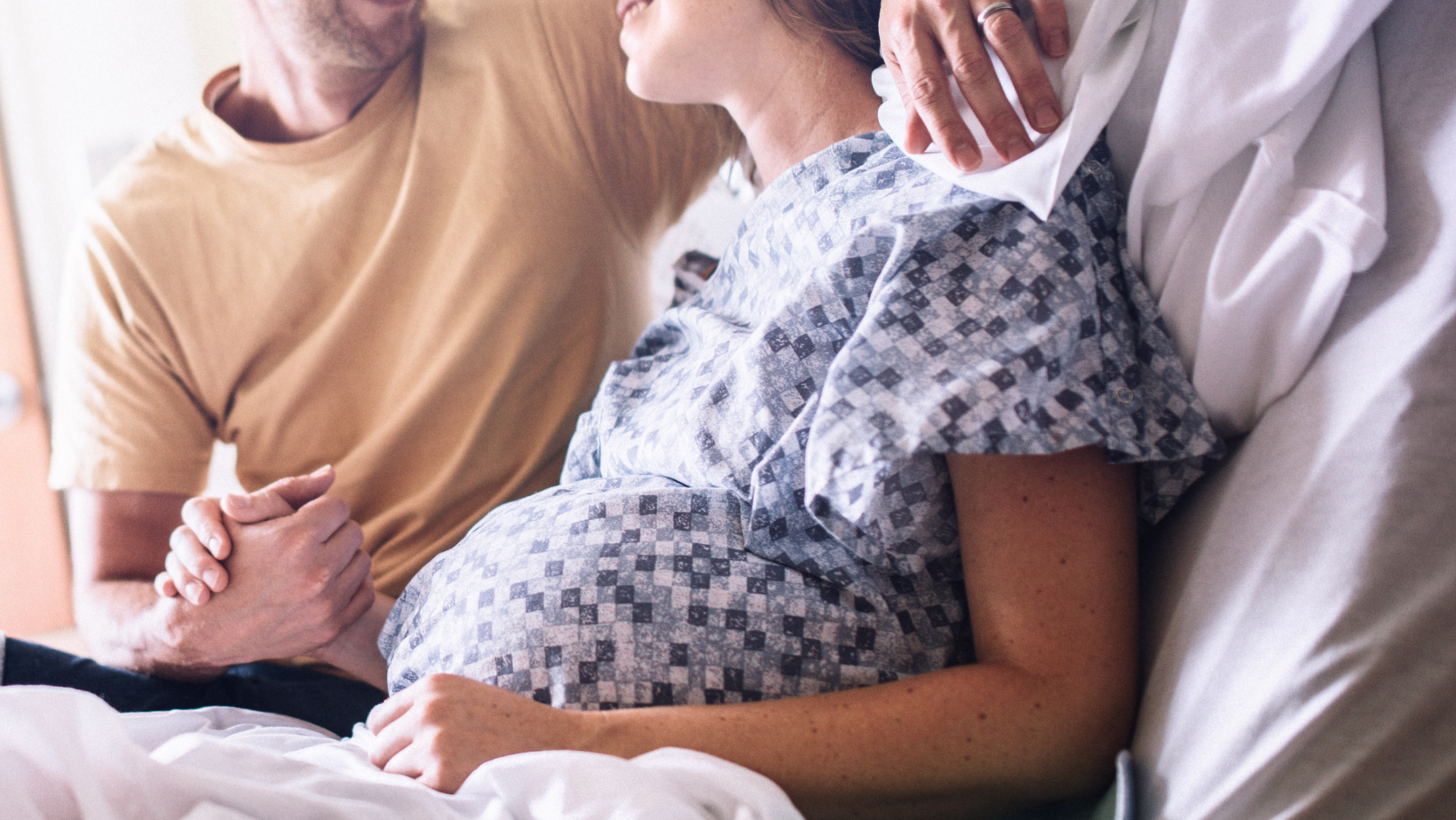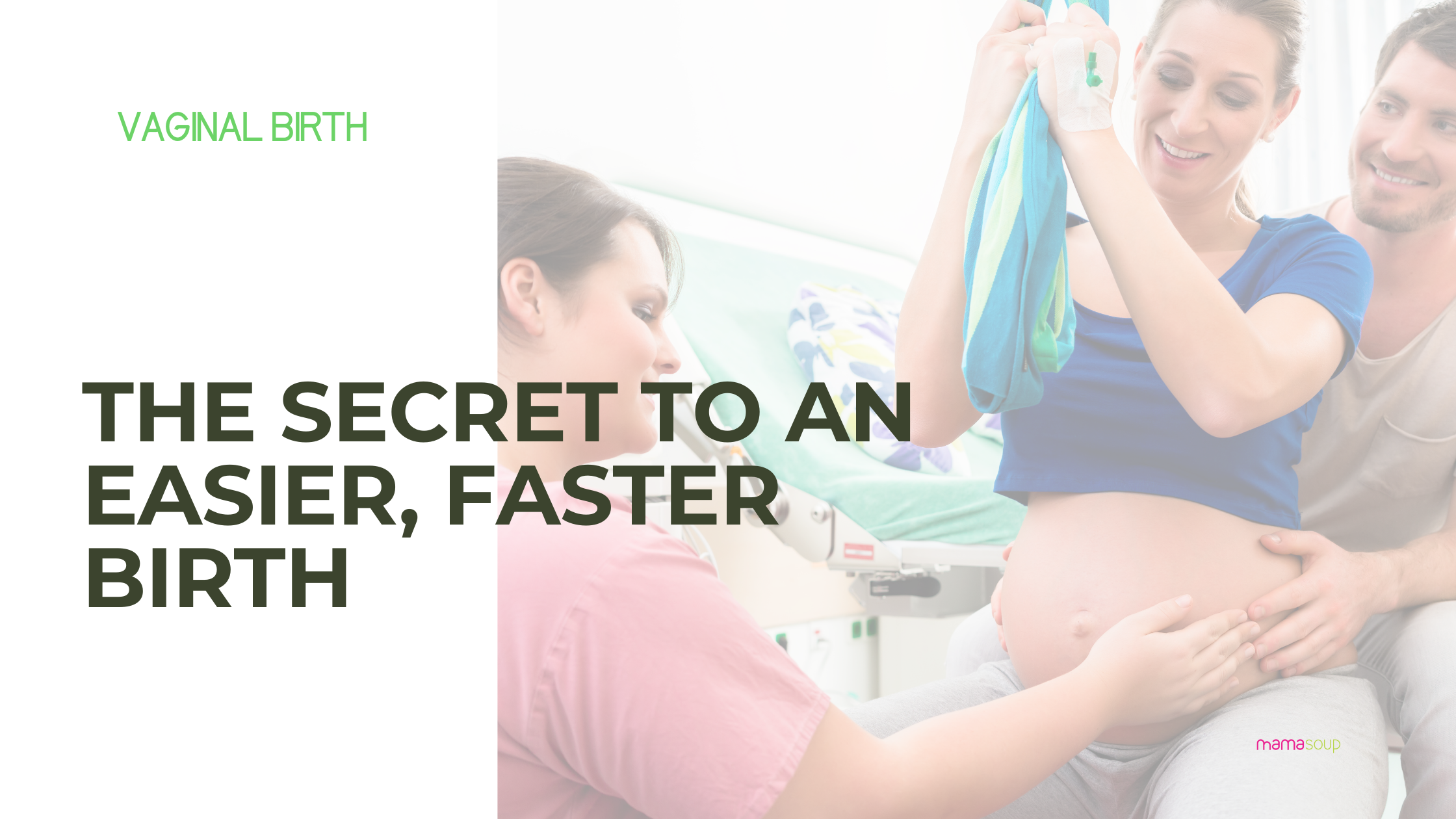Vaginal vs C-Section: How your Recovery is Different
Whether you push your baby out or bravely give birth by caesarean, you’re going to have to take some time to recover from what your body just went through. It’s silly for us to act as though birth is equal when the experience is completely different and the very same can be said for postpartum recovery.
The way you give birth affects the way you recover. And while the one thing having a baby does is unite us in the Mom Club, every person experiences their postpartum differently.
Over years of working with brand new moms in the hospital as a nurse, I’ve created a little ‘cheatsheet’ about the differences between recovering from a vaginal birth and a c-section. Because I don’t want you to feel unprepared or caught off-guard!
1. Postpartum Bleeding
Fun Fact: Bleeding after a cesarean is generally lighter than after a vaginal birth because a lot of it is suctioned away during the surgery.
Because of this, after a vaginal birth there will probably be heavier bleeding in the first day or two with more clots.
However, the bleeding will even out and will follow the typical stages of postpartum bleeding.
Click below for a super hot postpartum bleeding tip:
2. Incision Care
If you’re really lucky, you won’t have to deal with an incision, stitches or staples at all. For the rest of us, these are a reality. So what’s the big difference?
Well, to start with the incision from a cesarean is going to be longer and deeper. In order to get to your baby, the doctor has to carefully cut and separate 7 layers of tissue and muscle. Some of those layers are stitched back together and some repair themselves, but the fact is that your incision is much more than skin deep! This is why you aren’t allowed to lift anything heavier than 10 pounds while you’re recovering from a cesarean.
If you experience a tear during a vaginal birth or if the doctor has to perform an episiotomy (an incision in the area between your vaginal and your anus) it’s not nearly as deep. It can feel like it is, but most of the time it will heal easily with just one layer of dissolvable stitches.
Whether you have stitches in your tummy or ‘down there’ the recommendations will be to keep the area as clean and dry as possible. Obviously this is a bit trickier after a vaginal birth because you’ll be bleeding in that area. This is why a lot of care should be taken with using the squirt bottle and patting the area dry frequently to make sure you don’t get an infection!
After a c-section, your incision will need to be braced against a pillow or folded towel when you change positions. After a vaginal birth, you may find it tough to sit on your bottom for any length of time.
3. After Pains
After Pains are contractions that help your uterus shrink back to its pre-pregnancy size. Your uterus is pretty amazing- it grew about 25 times bigger during pregnancy so takes some time and effort to help it contract back to normal.
These suckers creep up on most women who’ve already given birth because they’re more intense.
The truth is, after pains are the same whether you’ve had a vaginal or cesarean birth. Even though they can be very uncomfortable it’s important to remember they’re playing a part in controlling your postpartum bleeding!
4. Pain
There are many reasons for feeling pain after birth. Whether it’s because of your incision, back pain from the epidural or spinal, a sore pelvic area from shifting, a headache from the epidural or sore muscles from doing the biggest workout ever.
The fact is that there’s usually more pain after a c-section because it’s major abdominal surgery. So when you have one, you are offered more pain control.
After a vaginal birth, most of the time some Tylenol or Advil will do the trick. But after a cesarean, most find that they need stronger painkillers and they need to take them for longer.
5. Bowel Movements
When it comes to postpartum, sh*t happens- but it can take time! Whether you’ve pushed your baby out or not, moving your bowels can be harder than moving mountains.
After a vaginal birth, you may find yourself with hemorrhoids from pushing that are swollen. Or you may feel afraid that you’ll tear your stitches or that it’ll hurt too much.
After a cesarean, you may experience a lot of gas!
Sometime, you can’t go because the stronger medications you have to take will slow down your bowels and you’re not up and moving as much as usual. Plus, you may have some hemorrhoids that you picked up during pregnancy getting in the way.
Either way, you’ll need to drink lots of water and use a stool softener until your bowels are sorted out. It’s easier to be proactive with avoiding constipation than it is to fix it, so be sure to stay on top of it, no matter how you give birth!
For more constipation tips for pregnancy and postpartum, click the image below:
6. Peeing
Peeing after a vaginal birth may sting a little if you have a tear or stitches. This is when your handy peri-bottle is a lifesaver- be sure to spray it over your perineum while you’re peeing! But what a lot of women are surprised about is how badly swollen lady-bits can affect your ability to pee. In my experience, it seems that prolonged pushing against a frozen perineum from an epidural makes the swelling worse. It can mean that you have to be catheterized after your baby is born in order to get rid of your urine.
Sometimes, all it takes is a little extra time on the toilet with the sweet sound of water running to get you going again.
After a cesarean, you may find that after your catheter comes out, the first couple of times you pee it may twinge or burn a little bit. This can be perfectly normal, but it shouldn’t last!
7. Post Birth Swelling (Hands, Feet)
Swollen hands and feet are an inconvenient side-effect of many pregnancies. It’s a real slap when you finally have your baby and you’re finding yourself still puffy.
Depending on how you gave birth, you may be more likely to experience swelling and sometimes it gets worse before it gets better.
If you have a cesarean you’re more likely to see puffiness because you’ve received IV fluids for 24 hours.
Your best bet is to drink lots of water to flush it all out and be patient- it can last a couple of weeks after your baby is born so keep those flip flops handy!
For more on what to expect from your postpartum body (including a swollen vagina) click HERE.
8. Mobility
I think we can all agree that you won’t be running down the halls of the hospital no matter how you give birth. But after a c-section you’re going to find yourself extra slow to get going. It’s hard to go from laying to sitting, sitting to standing straight up and then to taking steps.
After a vaginal birth, you may find that generalized pain from being in labor affects your ability to get around. Also, your crotch may hurt. Some even experience pelvic pain after birth that makes it tough to take steps.
9. Hospital Stay
Fun Fact: Many hospitals give midwives hospital privileges to attend your birth and then they can discharge you to recover at home under their care.
If you have an uncomplicated vaginal birth under the care of a midwife, you can have your baby and then go home as soon as you’re ready.
For a vaginal birth under a doctor or obstetrician, you can expect to stay in the hospital for 24-48 hours.
For a cesarean, your hospital stay typically lasts 48-72 hours.
Btw, if you're having a booked c-section click the link to take our online quiz and find out if you're cesarean-ready!
10. Clothing
Alright, I threw this one in at the last minute. And the reason I did that is because I’ve seen far too many women have a cesarean and be unprepared for the ‘underwear situation’. What’s the situation? Basically, it’s bringing undies to the hospital that sit right on their incision line. It’s fine in the first day or two, but when the dressing comes off the underwear rub right against the scar.
So, here’s my advice:
I think I made my point in my Youtube video above: there’s never a place for thongs or expensive lingerie in childbirth. But if you’re having a c-section, bring high-waisted granny panties!
If you’re pregnant, you’re gonna need to get planning for your postpartum period. You can do it like a pro if you grab my postpartum planning guide HERE. It's 17 - 20 pages of activities to get you thinking about your life post-pregnancy!
It’s so much easier when you’ve got someone by your side, even when a pandemic means they can’t physically ‘be there’.
If you’re looking for support to help you navigate the first weeks of motherhood, I’ve got you with virtual postpartum support- I’ll be there for you! Click to learn how to hire ME to help YOU.
Post Gallery
Hey there, I’m Joanne.
I’ve spent about 20 years serving women as a nurse, doula and Lamaze educator. I have 4 kids and I know firsthand how lonely and isolating motherhood can be, so I created MamaSoup. I'm mostly known for my love of red wine, spontaneously singing and my confidence in being my true self on social media. When I’m not busy building women up, you can catch me taking Instagram stories of my bulldog Ruby, watching The Handmaid’s Tale, playing MUber (Mom Uber) to my kids or vacationing in my favourite town: Cabo San Lucas, Mexico.
I love serving the world by providing a space for moms to connect and support each other. In my opinion, moms are the backbone of communities because they are (literally) raising the future!
As the founder and CEO of MamaSoup, I’ve been featured on CHEX TV Morning Show, KawarthaNOW, Economic Development- The City of Kawartha Lakes and MyKawartha.
Still with me? Join me over at MamaSoup to keep the conversation going!
Read More










